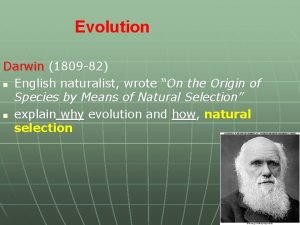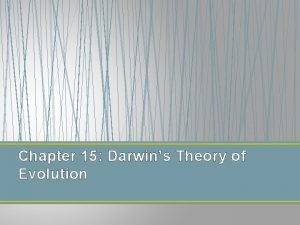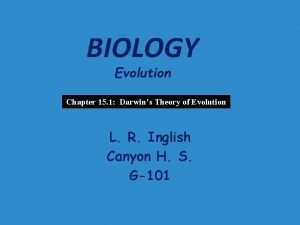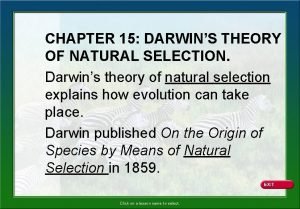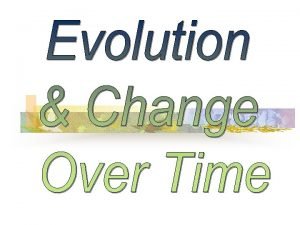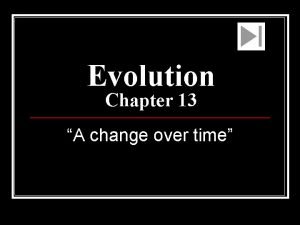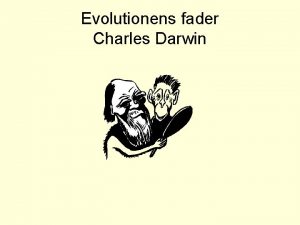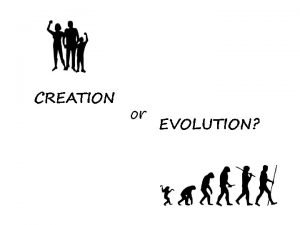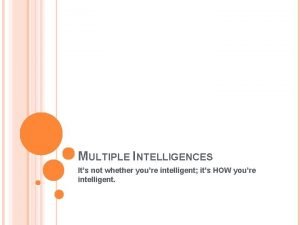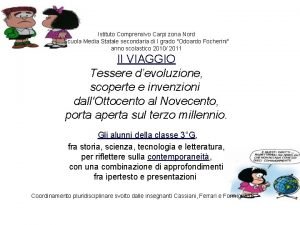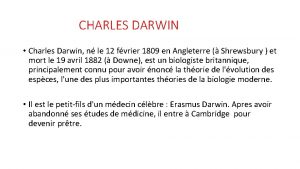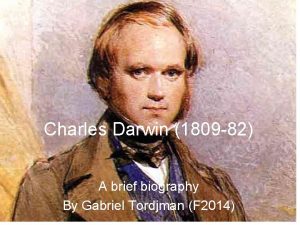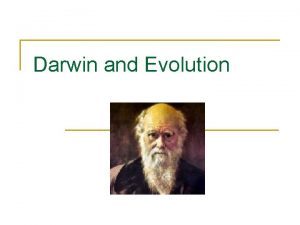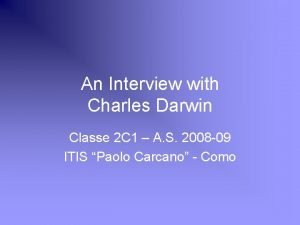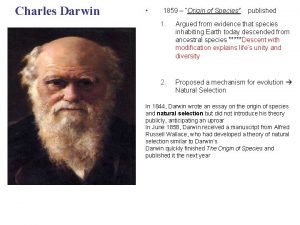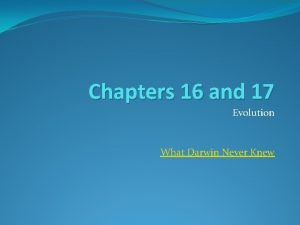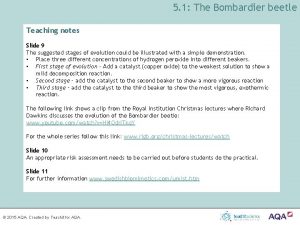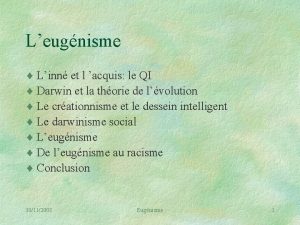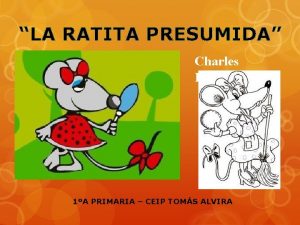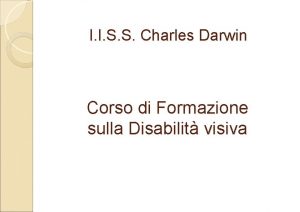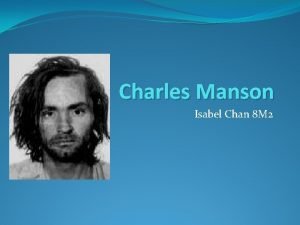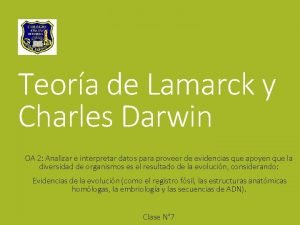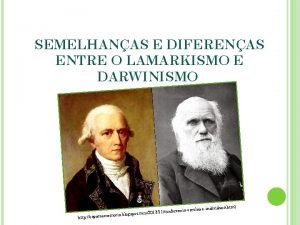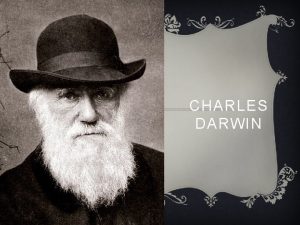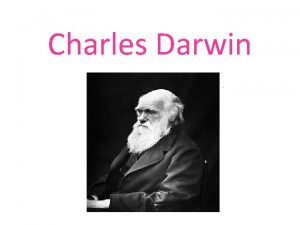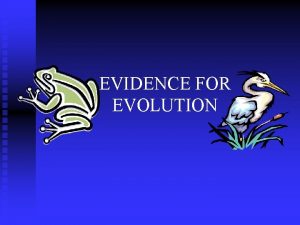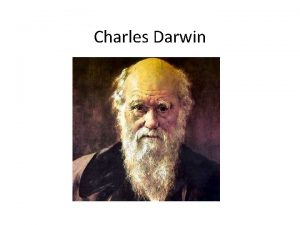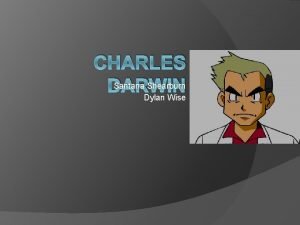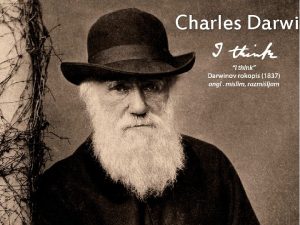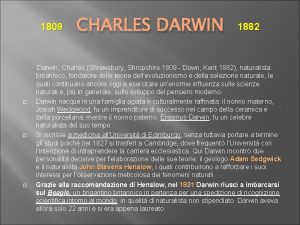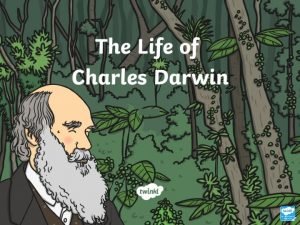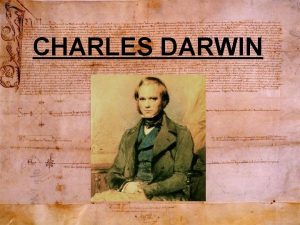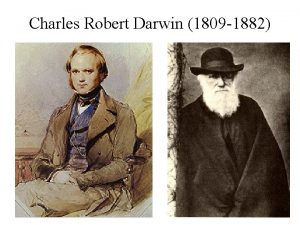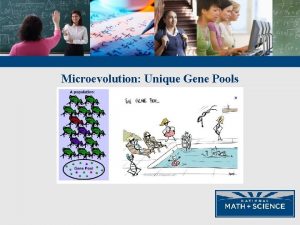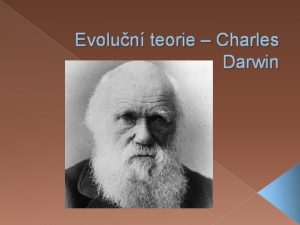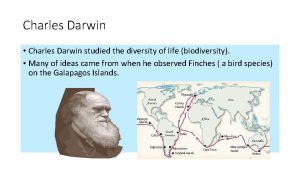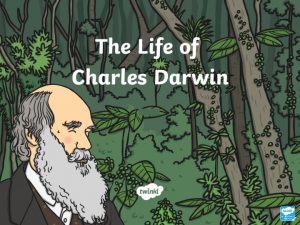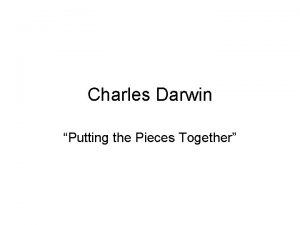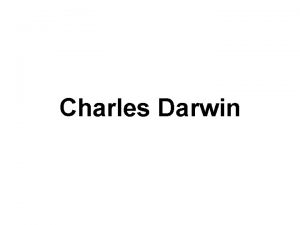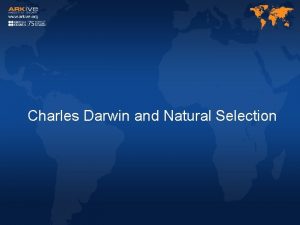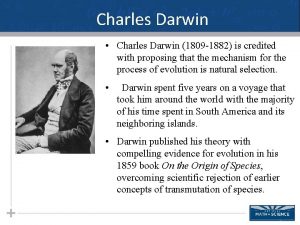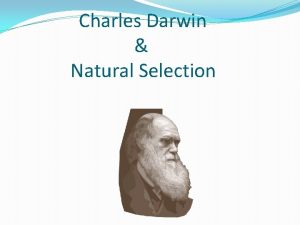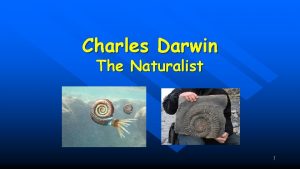Evolution A C Darwin Powerpoint Production Charles Darwin
































- Slides: 32

Evolution A C. Darwin Powerpoint Production

Charles Darwin • Was a British Naturalist (a person who studies the natural world). • He came up with theory of Evolution by Natural Selection while on an observation trip aboard the HMS Beagle.

The Beagle’s Journey

The Galapagos Islands

The Beagle’s Journey • Visited South America and the Galapagos Islands (among other places) (1835) • Darwin saw many plants and animals on the Galapagos Islands that were similar to ones found in South America, but not the same

Darwin’s Observations Mainland: Galapagos: – Iguana’s with – Iguana's with small claws to large claws to climb trees grip rocks – Iguana’s green in – Iguana’s gray in color to blend in with leaves with rocks – Iguana’s don’t – Iguana’s have webbed feet partially webbed feet


Why the difference? • Based on Darwin’s observations, he theorized that a small number of different plant and animal species came to the Galapagos Islands from the mainland (South America). • They started reproducing and eventually their offspring became different from their mainland relatives.

More changes? • As Darwin travelled amongst the islands, he noticed more differences between similar organisms. – Finches on the islands had different beaks depending on what type of food they had to eat on the island.

Darwin’s Hypothesis • On his journey home, thought about his observations • Hypothesis-separate new species may have come from one original ancestor

Darwin’s Theory of Evolution • Darwin thought that the species gradually changed over many generations and became better adapted to the new conditions. – Species-a group of similar organisms that can mate with each other and produce fertile offspring – Evolution-the gradual change in a species over time

What is the difference between a theory and a law? • A theory is a scientific explanation of an observation. Unlike laws, theories actually explain why things are the way they are. • A scientific law is a description of an observation. Newton’s Laws of motion are good examples. Those laws describe forces in physics, but they do not explain why they are that way.

Selection • Natural Selection- process by which individuals that are better adapted to their environment are more likely to survive and reproduce than other members of the same species. “Survival of the Fittest” • Artificial Selection- humans decide which traits in a species are desirable and breed individuals with those traits (aka Selective Breeding)

Evolution by Natural Selection • Over a long period of time, natural selection can lead to evolution. Helpful traits are passed down while unfavorable traits are not. Over many generations, the species can change to better suit their environment.

Factors that affect Natural Selection 1. Overproduction 2. Competition 3. Variation

The 3 Factors in Natural Selection 1. Overproduction-organisms produce more offspring than can survive. There are not enough resources for all to survive so only those that have traits suited for survival will live to reproduce. This allows traits that are successful to be passed on to offspring.

The 3 Factors in Natural Selection 2. Competition-organisms of the same species must compete for resources. For example, some might not find enough to eat. Those that are successful in competition will live reproduce and pass their traits to offspring.

The 3 Factors in Natural Selection 3. Variations-differences between individuals of the same species. Variations can be passed down from parents to offspring. For example, some newly hatched turtles can swim faster than other turtles. Those turtles will survive to pass their traits on to offspring.

The 3 Factors in Natural Selection Some variations allow members of a species to survive and reproduce better than others.

In Summary • Some variations make individuals better adapted to their environment so when they reproduce, their offspring may inherit those alleles for that trait. • The offspring, in turn, will be better suited for the environment and pass on the allele to their offspring. • After many generations, more members of the species may have the helpful trait. In effect, the environment has “selected” organisms with helpful traits to be the parents of the next generation.

Evidence of Evolution • • Fossil Record DNA Homologous Body Structures Similarities in Early Development • Vestigial Organs

Fossil Record • Fossil-preserved remains or traces of an organism that lived in the past, most form when organisms that die become buried in soil and rock • Fossil Record-all the millions of fossils that scientists have collected • Oldest fossils are at the bottom, newer ones at the top


DNA • Organisms that have close relatives have similar DNA – The more similar the DNA, the more closely related the species are • Scientists have even found ways to get DNA from some fossils

Homologous Body Structures • Homologous structures-similar structures that are inherited from a common ancestor • When organisms have homologous structures, it means they evolved from a common relative • Analogous structures-similar structures that evolved separately, not from a common ancestor.


A B A shows that sharks and lizards have a common ancestor who had limbs like they have now. B shows that even thought the octopus has a similar kind of limb as sharks and lizards, it is an analogous structure since the octopus doesn’t share a common ancestor with Limb=arm or leg the shark and lizard. Tetrapod=an organism with 4 limbs

Similarities in Early Development • Scientists look at early development of different organisms to see if they are similar

Vestigial Organs • A body part that doesn’t seem to have any function at this time – Ex-appendix, tailbone and wisdom teeth in humans, pelvic bone in whales, wings on ostrich and emus

What does it all mean? • Scientists have combined evidence from fossils, DNA, similar structures, etc to determine evolutionary relationships among species • Branching Tree- a diagram that shows how scientists think different groups of organisms are related


One Last Thing… Fantasia Evolution Video http: //www. youtube. com/watch? v=UGd. K 9 jpn 19 w&feature=player_embedded The Evolution of Homer http: //youtu. be/fa. Rl. Fs. Ymke. Y
 Explain the theory of evolution
Explain the theory of evolution Sebutkan alur produksi multimedia
Sebutkan alur produksi multimedia H
H Chapter 15 darwin's theory of evolution
Chapter 15 darwin's theory of evolution Chapter 17 darwin's theory of evolution
Chapter 17 darwin's theory of evolution Chapter 15 darwin's theory of evolution section 15-1
Chapter 15 darwin's theory of evolution section 15-1 Homologous structures definition biology
Homologous structures definition biology Chapter 15 darwin's theory of evolution
Chapter 15 darwin's theory of evolution Bat wing
Bat wing Darwin's theory of evolution
Darwin's theory of evolution Vem var charles darwin
Vem var charles darwin Worldview academy
Worldview academy Where was charles darwin born
Where was charles darwin born Linguistic intelligence celebrities
Linguistic intelligence celebrities Charles darwin origine della specie
Charles darwin origine della specie Charles darwin origine della specie
Charles darwin origine della specie Charles darwin vikidia
Charles darwin vikidia Where was charles darwin born
Where was charles darwin born Charles darwin notes
Charles darwin notes Chronemics in nonverbal communication
Chronemics in nonverbal communication Charles darwin
Charles darwin Darwism
Darwism Vestigial structures
Vestigial structures Molecular biology evidence of evolution
Molecular biology evidence of evolution Whos charles darwin
Whos charles darwin Lamarck vs darwin
Lamarck vs darwin Qi charles darwin
Qi charles darwin Perro de la ratita presumida
Perro de la ratita presumida Iiss darwin
Iiss darwin Origin of species by charles darwin
Origin of species by charles darwin Charles luther manson
Charles luther manson Site:slidetodoc.com
Site:slidetodoc.com Semelhanças entre darwinismo e lamarckismo
Semelhanças entre darwinismo e lamarckismo


